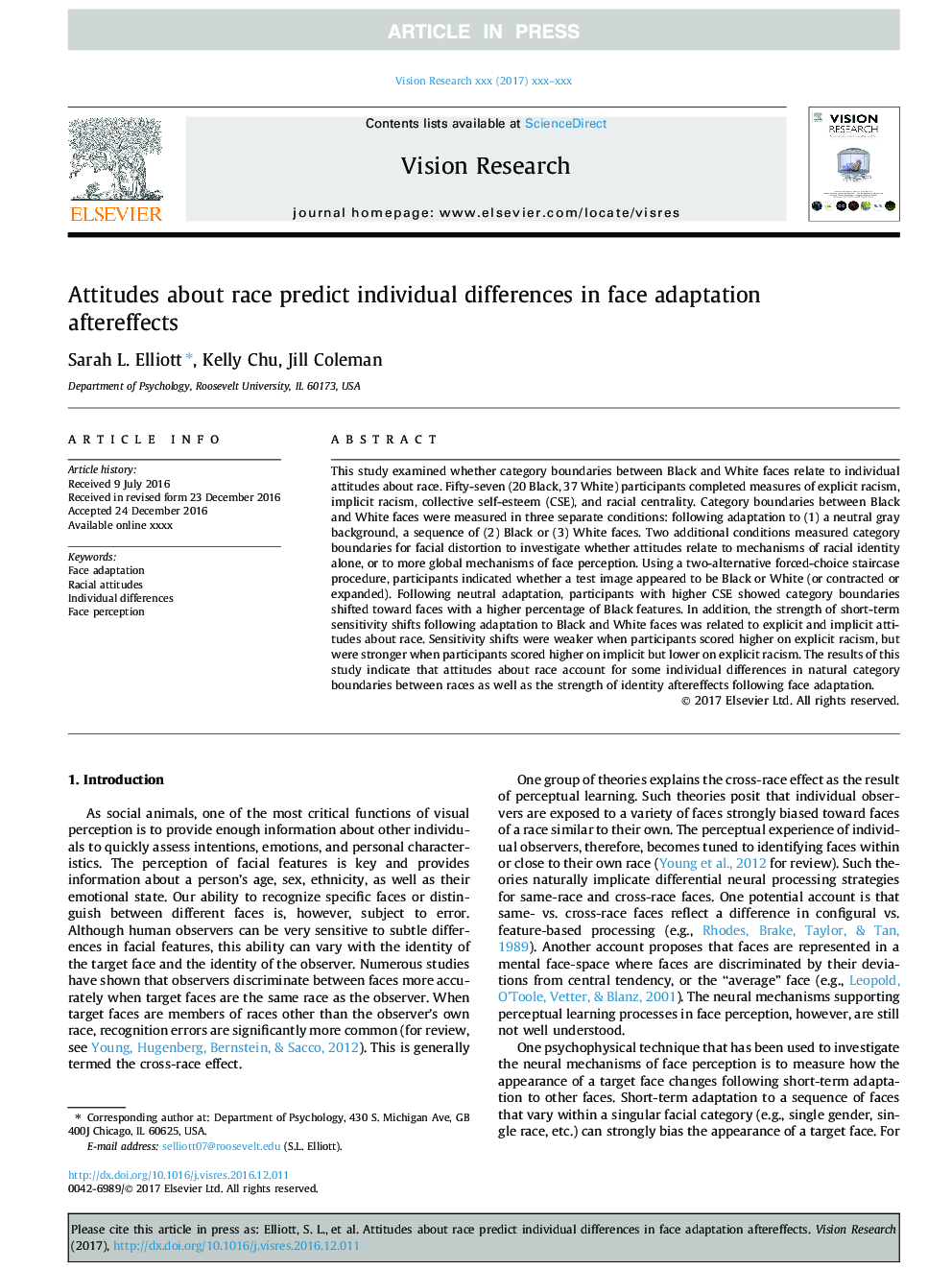| Article ID | Journal | Published Year | Pages | File Type |
|---|---|---|---|---|
| 8795364 | Vision Research | 2017 | 10 Pages |
Abstract
This study examined whether category boundaries between Black and White faces relate to individual attitudes about race. Fifty-seven (20 Black, 37 White) participants completed measures of explicit racism, implicit racism, collective self-esteem (CSE), and racial centrality. Category boundaries between Black and White faces were measured in three separate conditions: following adaptation to (1) a neutral gray background, a sequence of (2) Black or (3) White faces. Two additional conditions measured category boundaries for facial distortion to investigate whether attitudes relate to mechanisms of racial identity alone, or to more global mechanisms of face perception. Using a two-alternative forced-choice staircase procedure, participants indicated whether a test image appeared to be Black or White (or contracted or expanded). Following neutral adaptation, participants with higher CSE showed category boundaries shifted toward faces with a higher percentage of Black features. In addition, the strength of short-term sensitivity shifts following adaptation to Black and White faces was related to explicit and implicit attitudes about race. Sensitivity shifts were weaker when participants scored higher on explicit racism, but were stronger when participants scored higher on implicit but lower on explicit racism. The results of this study indicate that attitudes about race account for some individual differences in natural category boundaries between races as well as the strength of identity aftereffects following face adaptation.
Related Topics
Life Sciences
Neuroscience
Sensory Systems
Authors
Sarah L. Elliott, Kelly Chu, Jill Coleman,
